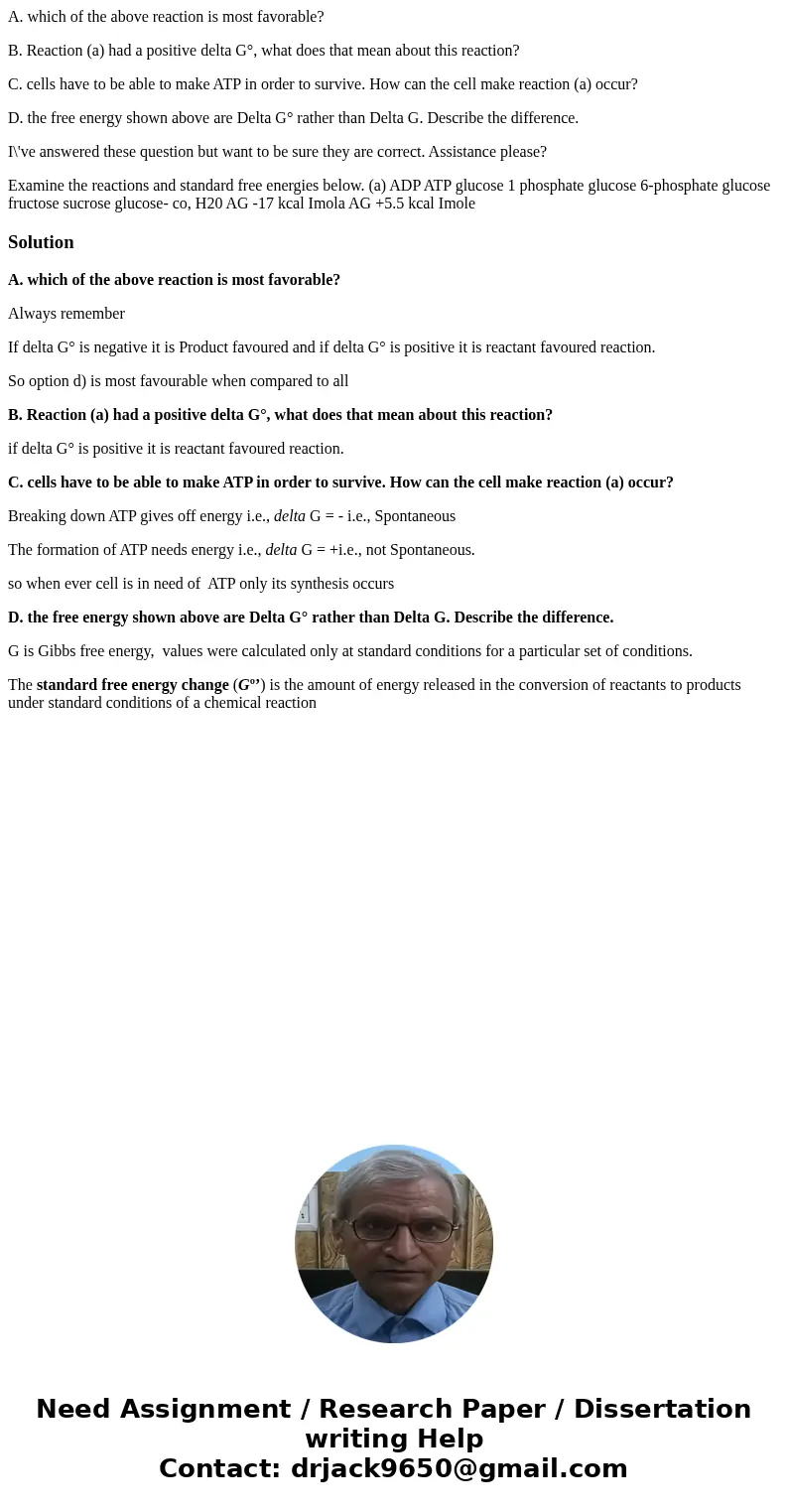A which of the above reaction is most favorable B Reaction a
A. which of the above reaction is most favorable?
B. Reaction (a) had a positive delta G°, what does that mean about this reaction?
C. cells have to be able to make ATP in order to survive. How can the cell make reaction (a) occur?
D. the free energy shown above are Delta G° rather than Delta G. Describe the difference.
I\'ve answered these question but want to be sure they are correct. Assistance please?
Examine the reactions and standard free energies below. (a) ADP ATP glucose 1 phosphate glucose 6-phosphate glucose fructose sucrose glucose- co, H20 AG -17 kcal Imola AG +5.5 kcal ImoleSolution
A. which of the above reaction is most favorable?
Always remember
If delta G° is negative it is Product favoured and if delta G° is positive it is reactant favoured reaction.
So option d) is most favourable when compared to all
B. Reaction (a) had a positive delta G°, what does that mean about this reaction?
if delta G° is positive it is reactant favoured reaction.
C. cells have to be able to make ATP in order to survive. How can the cell make reaction (a) occur?
Breaking down ATP gives off energy i.e., delta G = - i.e., Spontaneous
The formation of ATP needs energy i.e., delta G = +i.e., not Spontaneous.
so when ever cell is in need of ATP only its synthesis occurs
D. the free energy shown above are Delta G° rather than Delta G. Describe the difference.
G is Gibbs free energy, values were calculated only at standard conditions for a particular set of conditions.
The standard free energy change (Gº’) is the amount of energy released in the conversion of reactants to products under standard conditions of a chemical reaction

 Homework Sourse
Homework Sourse